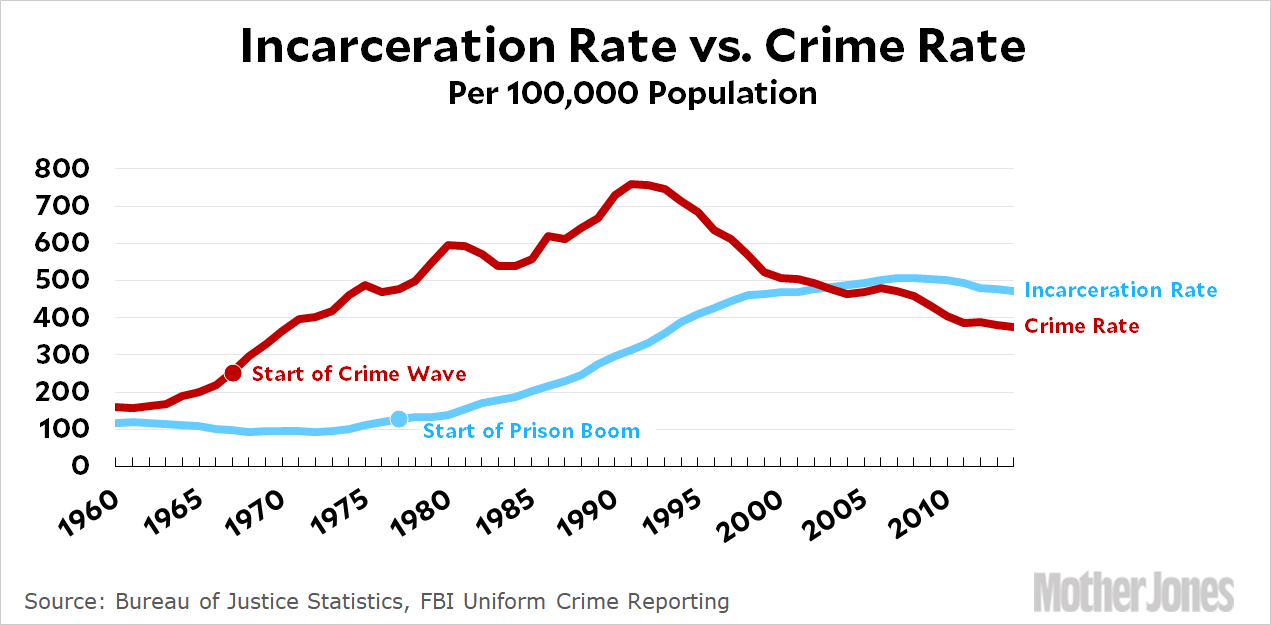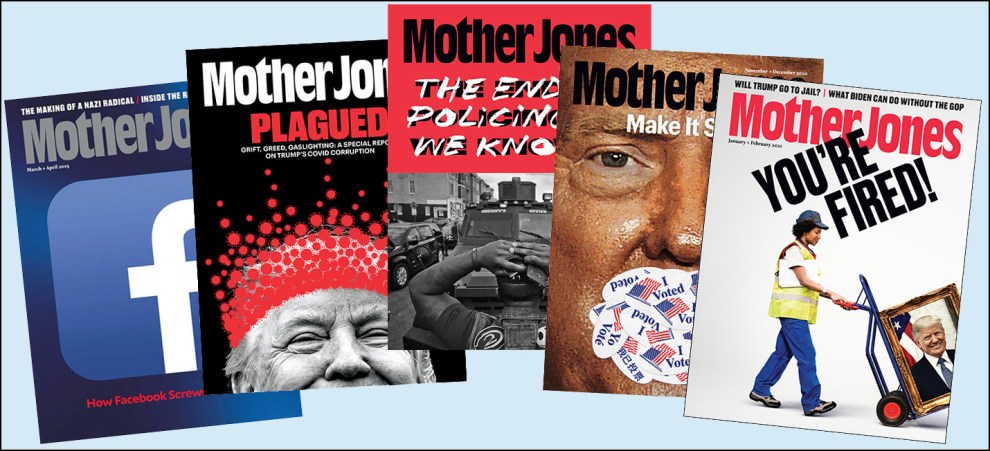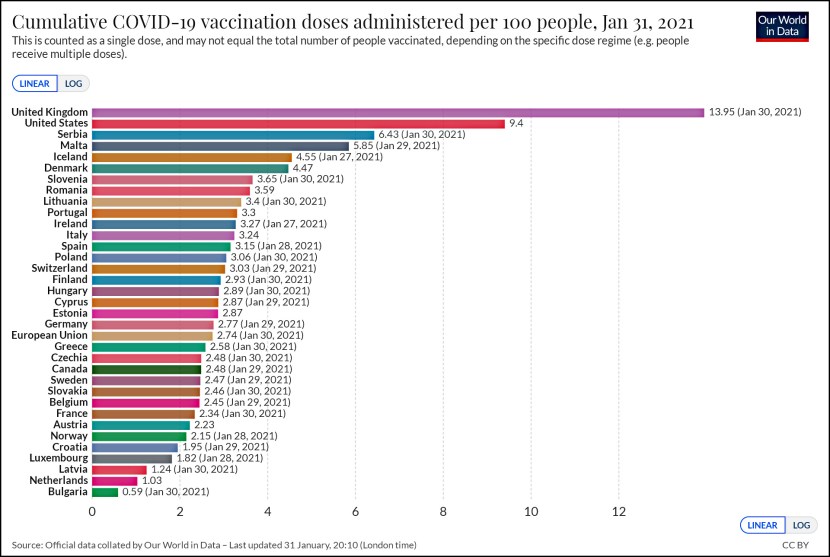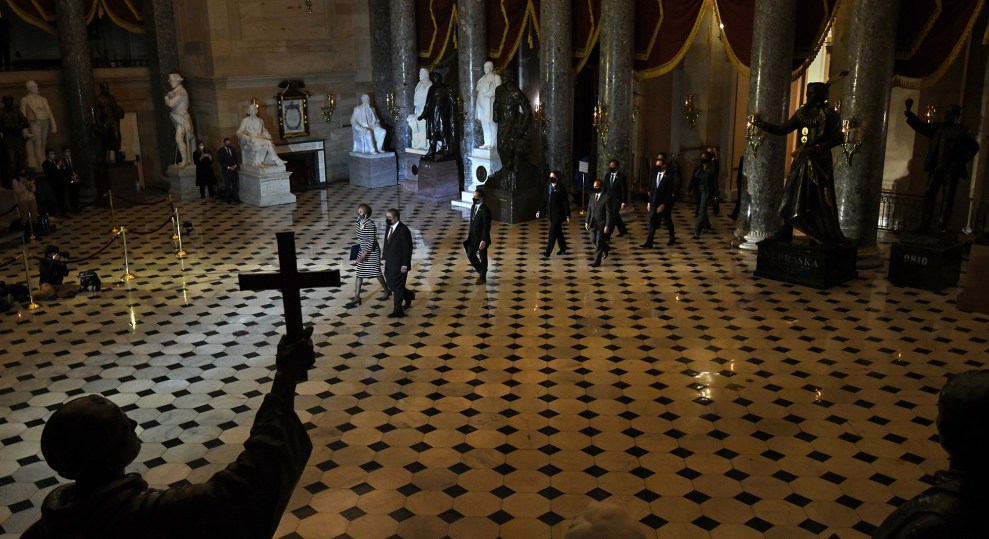One of our new writing fellows, Camille Squires, published a piece on Monday telling us that the “Kamala was a cop” meme didn’t originate with Bernie-bro-ish white guys. Rather, it originated on Black Twitter among African Americans who were keenly familiar with Kamala Harris’s mixed record as California’s attorney general. Harris billed herself as California’s “top cop,” and in this era of mass incarceration that just didn’t sit well. It’s a good piece, and I only wish it had been longer since I would have been interested in a deeper dive into exactly what Black Twitter thought of Harris.
Squires’s piece also reminded me that, after years of not getting around to it, I finally read Michelle Alexander’s groundbreaking book, The New Jim Crow, a few weeks ago. For those of you who haven’t read it, here’s a nickel summary:
Alexander argues that America has a long history of controlling the black population by whatever means it can get away with. First it was slavery. Later, when that was outlawed, we turned to Jim Crow because it was the best we could do. Then, following the civil rights era, we turned to mass incarceration. It wasn’t as effective as either slavery or Jim Crow, but again, it was the best we could do.
The core of Alexander’s case is the obvious one: we imprison a lot of people, and among those people we imprison a far bigger share of African Americans than we do of white people. The excuse for this is the war on drugs, which led to the arrest and incarceration of vast numbers of black men. Crucially, Alexander says, we arrest black men for drug offenses that we barely touch white men for. We make up lots of reasons for this, but they mostly turn out to be spurious. Basically, even though black and white men are involved in the drug trade about equally, we mostly imprison only black men for violating our drug laws.
One of the things that struck me as I was reading The New Jim Crow was that it sounded familiar. Not just in its themes, but almost literally. And then it hit me: it sounded very much like some of the things that Angela Davis and her colleagues wrote about incarceration in the early 70s. After rummaging around a bit, I finally found what I was thinking of: an essay by Bettina Aptheker called “The Social Functions of the Prisons in the United States,” part of Davis’s 1971 essay collection If They Come In the Morning. I reread it, and it was eerily similar to Alexander’s book.
But it was written 50 years ago. How could it be so similar if Alexander was focused on two recent phenomena: the era of massive prison construction and the war on drugs? And that in turn prompted me to think about timing: Alexander’s argument could only be persuasive if the data on black imprisonment fits the timing of the war on drugs. So I started to root around. This chart is the result:
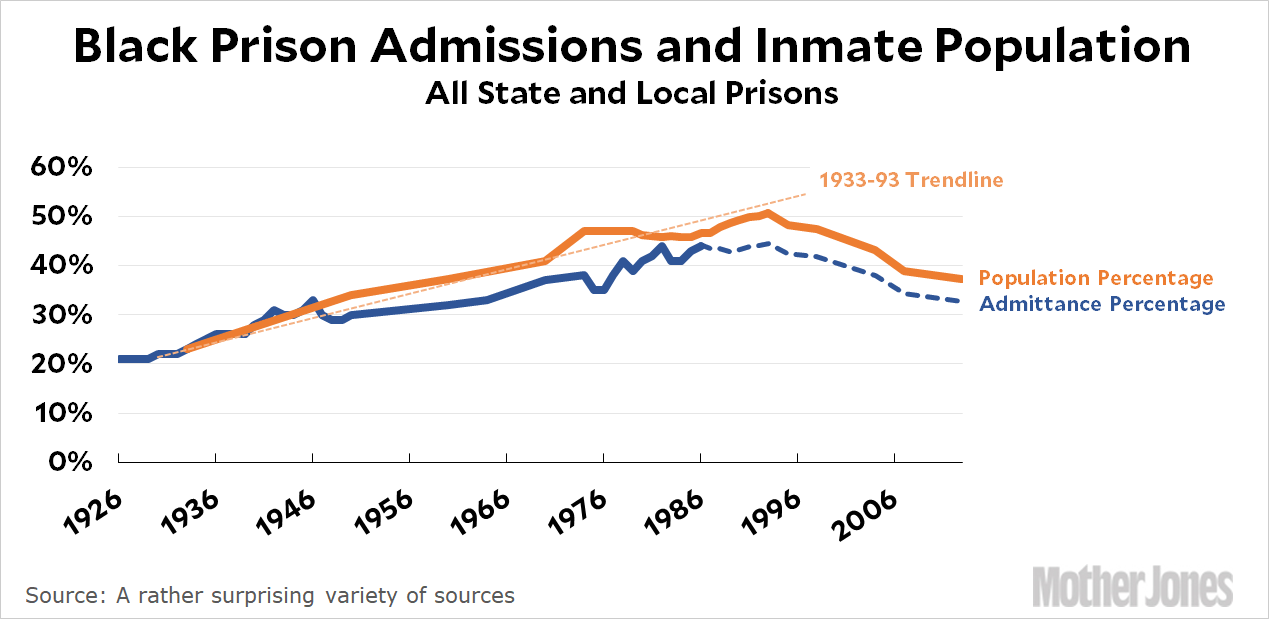
This data is surprisingly hard to come by, and I had to cobble it together from a wide variety of sources. Luckily, in 1991 the Bureau of Justice Statistics published a short study called “Race of Prisoners Admitted to State and Federal Institutions, 1926-86.” I say “luckily” because this is not a statistic that can simply be pulled from a database somewhere. A researcher has to dig into the data, clean it up, and finally come up with a reliable and consistent table of data that covers a long time period. I also say “luckily” because this appears to be the only study ever done on this exact subject and it forms the backbone of my chart.
That’s the dark blue line. The orange line is simple prison population by race, and this is a little easier. Early data comes from census reports and later data from annual Justice Department bulletins. As you can see, it follows the blue line pretty closely and provides a good check that the 1991 study is fairly reliable.
So what does this show us? Surprisingly (to me, anyway), what it shows is that there wasn’t a huge surge in the rate of black imprisonment during the drug wars of the 70s and 80s. Rather, the share of black men being arrested and imprisoned has gone up slowly but steadily since at least 1926. Between 1970 and 1990, the total number of people in prison skyrockets, but the share of prison admissions that’s black continues the same slow ascent it’s displayed all along.
I’m not sure what to make of this. Alexander’s argument about the war on drugs might still be correct. Contrary to what most people think, our nation’s prisons aren’t mostly filled up with drug offenders. It’s mostly filled up with robbers and murderers and carjackers and other folks who have committed violent crimes. So even if the drug offenders who are arrested and imprisoned are very heavily black, it might not affect the overall black imprisonment rate a lot.
I’m not sure, and I’m not going to draw any conclusions here. Maybe I’m missing something in the data. Or maybe it doesn’t matter. Maybe the black share of prisoners didn’t change much during the prison-building boom of the 70s and 80s, but the simple act of imprisoning more people was all we needed to make sure we got lots of black men off the streets and under the control of the criminal justice system. If a few white men were collateral damage, so be it.
Either way, though, it seems like the story changes. The war on drugs, in particular, doesn’t seem like it had a noticeable effect on black imprisonment rates, and Alexander tosses around numbers so blithely in her book that it’s impossible to construct a consistent statistical argument from them.
The New Jim Crow was published in 2012, and it’s entirely likely that it’s been discussed to death since then. Maybe my objections here are nothing new and have been addressed before. But if they have, I haven’t noticed it. I’m curious if anyone has anything to say about this.
POSTSCRIPT: It’s worth noting that the imprisonment rate of black men began to fall a couple of decades ago and has continued to fall ever since. It’s still far higher than the white imprisonment rate, but there’s at least some progress being made.
I’d also like to point out, as usual, that even if you think the prison-building spree of the 70s and 80s was misguided, it wasn’t completely irrational. Violent crime really did start to skyrocket in the mid-60s, and it really did scare people—including black people in urban cores who were the most numerous victims. As we now know, the crime increase was largely caused by lead poisoning, but nobody knew it at the time. They just knew that their streets were unsafe and they wanted something done about it.
